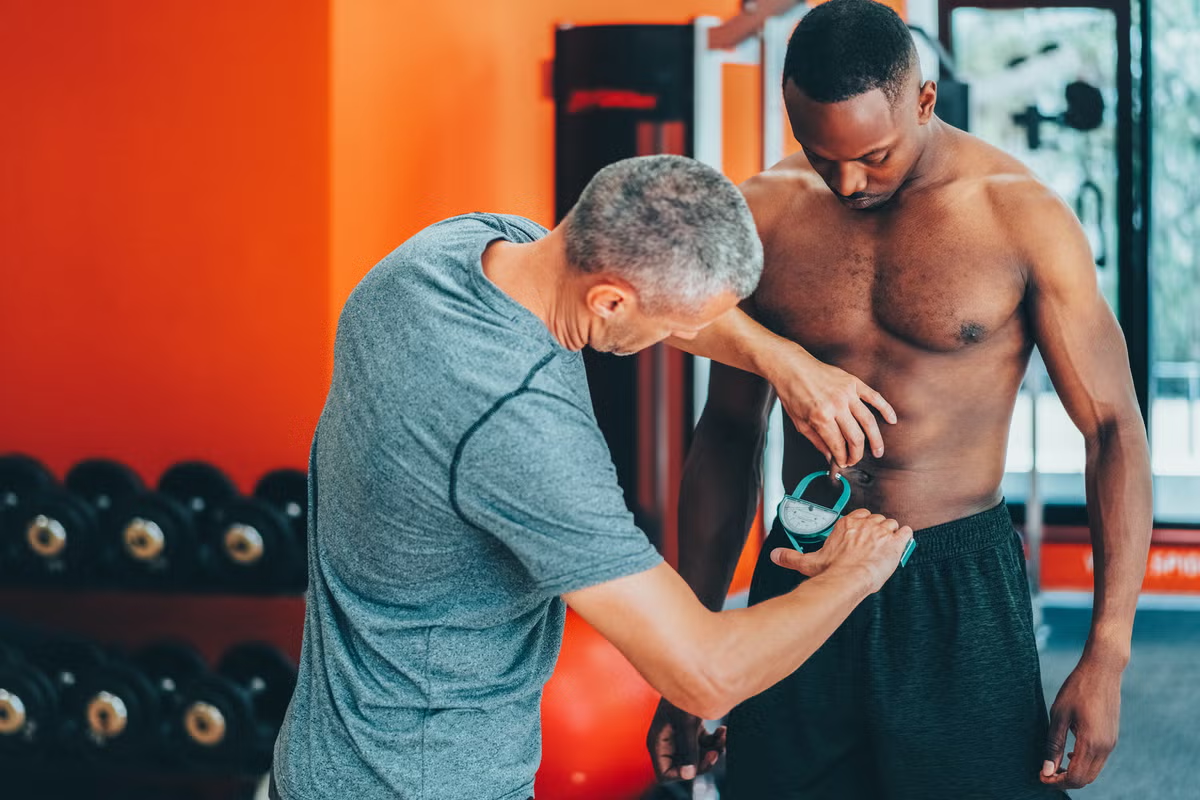PINCHED NERVES ARE UNCOMFORTABLE, no matter where they happen in the body. A pinched nerve in the neck, though, can be downright excruciating.
Most everyday movements require you to move your neck, even in the simplest ways you typically don’t consider. Turning to check your blind spot, looking down at your computer, and tilting the chin upward to check the wait time on your deli order all required functionality of the neck. It works as a bridge for our nerves to travel from the brain to the rest of the body. Develop a pinch in one of those nerves, and the symptoms, like pain and tingling, can spread all the way down through your limbs.
The severity of these symptoms can change the way you go about your everyday life. Typing on a computer, working a phone, and manual labor can become difficult if numbness and discomfort spreads through your arms and fingers. That could mean sacrificing the things you enjoy, too—like hitting the gym, playing tennis with your friends, or picking up your kids.
The good news is that relieving a pinched nerve, and getting back to normal life again, is possible with the right plan of action. Here, physical therapist Philip Tam, P.T., D.P.T., of Bespoke Treatments shares a few of the best stretches to release the tension that causes pinched nerves in the necks, and a few exercises to follow that will help prevent it from happening again.
What Is a pinched nerve?
A pinched nerve is exactly what it sounds like. A nerve is being pressured by surrounding tissue and thus, loses some circulation. This pressure can be caused by the surrounding muscles, cartilage, or bones, depending on the location of the pinch.
When this pressure accumulates, the neurons inside our nerves lose a bit of their route of conduction, causing symptoms like numbness, weakness, pain, and tingling.
What causes a pinched nerve in the neck?
Tam is specifically addressing cervical radiculopathy, one of the most common causes of a pinched nerve in your neck. He explains that the cervical spine is the portion of your spine that make up your neck. This consists of seven vertebrae, or spinal bones, and is responsible for the support and movement of your skull. It also houses most of the nerves as they spread from the brain down to the rest of the body.
Herniations of these disks and sore muscles in the neck and arms, among other things, can cause the vertebrae to put pressure on the nerves, which in turn results in the numbness and tingling that is most associated with a pinched nerve in the neck.
Tam breaks down these stretches for the neck and arms to relieve that tension. Remember, especially when it comes to dealing with pinched nerves, make sure that you only go to where you are comfortable with these movements. If any tingling, burning, or sensations of numbness increase, stop what you are doing and find the help of your physician or a physical therapist.
Stretches for pinched nerves
Chin tuck
Why: This move is simple but effective, helping lift compression off the nerve root. It will help strengthen the muscles on the front of your neck, known as the deep cervical muscles, as well as stretch out the muscles on the back of the neck.
How to do It:
- Stand up nice and straight, keeping the shoulders down and back.
- Keep the eyes lifted and looking forward.
- Tuck the chin down and back, as if you’re avoiding an unwanted kiss.
- Hold for 3 seconds and return to normal.
- Aim for 3 sets of 10 to 12 reps.
Levator scapula stretch
Why: Your levator scapula muscle attaches at both the neck and the shoulder, and tightness in it can be a common cause of nerve pinches that moves pain down the arm. This will help stretch out that muscle and open up some of the joint space in the cervical spine. Be sure to only go to where the stretch is comfortable.
How to do It:
- Stand up nice and straight, keeping the shoulders down and back.
- Lift the arm to 90 degrees with a bend in the elbows.
- Look down at the armpit.
- Take that same arm, and grab the back of the head.
- Hold the stretch for 20 seconds, repeating 3 times on each side.
Median nerve floss
Why: The median nerve is one of the largest nerves that run down your arm. It is the unfortunate victim in many nerve pinch cases. This move helps mobilise that nerve to get it firing correctly again.
How to do It:
- Stand up nice and straight, keeping the shoulders down and back.
- Lift the shoulder to create a 90 degree angle.
- Extend the whole arm out to the side, slowly opening up the elbow before moving to the wrist.
- Feel the stretch through the palm of the hand.
- If this feels comfortable, you can add in a tilt of the head in the opposite direction to open up the neck.
- Start off with 2 sets of 8 to 10 reps on each side. If it feels better by the second round, feel free to add in a third set.
Quadruped cat cow
Why: If your main symptoms include neck pain or mid-back pain, this one is for you. It will restore movement into the neck and upper back.
How to do It:
- Start on your hands and knees, and sink the hips back into the heels to take the lower back out of the equation.
- Round out the back and bring your chin into the chest.
- Arch the back and extend the neck up.
- Alternate these two positions, and aim for 10 reps for 3 sets.
Standing scapular retractions
Why: This exercise helps to relax your posture by activating the muscles surrounding your shoulder blades. “Often, a pinched nerve causes increased tension in the muscles surrounding the nerves, so we want to offload the tension by activating our scapular muscles as both your neck muscles and scapular muscles attach to your shoulder blade,” says Tam.
How to do It:
- Stand upright with your head in a neutral position. Relax your shoulders and bend your elbows to 90 degrees while keeping them close into your ribcage.
- Initiate the movement by squeezing your shoulder blades together. Gently drive your elbows back. Make sure to keep your head in a neutral position.
- Do not let your shoulders hike up during this movement; think about squeezing your shoulder blades down and back.
- Hold for 3 seconds. Do 10 reps.
No moneys
Why: This exercise helps provide a stable base in the neck by strengthening the shoulders and shoulder blades, which will offload some tension placed on the nerve. This move will also “help to activate key muscles that help you maintain an upright posture,” Tam says.
How to do It:
- Grab a light to medium resistance band. Start in an upright position with the shoulder blades relaxed, arms to your side, elbows bent to 90 degrees.
- Hold the band with both hands, palms facing up towards the ceiling. Gently pull the band apart, rotating your palms outwards, while keeping your elbows tucked into your side. Squeeze your shoulder blades gently at the end of the movement.
- Hold for 1 second before relaxing back to the starting position.
- Do 3 sets of 15 reps.
This story originally appeared on Men’s Health U.S.
Related:














